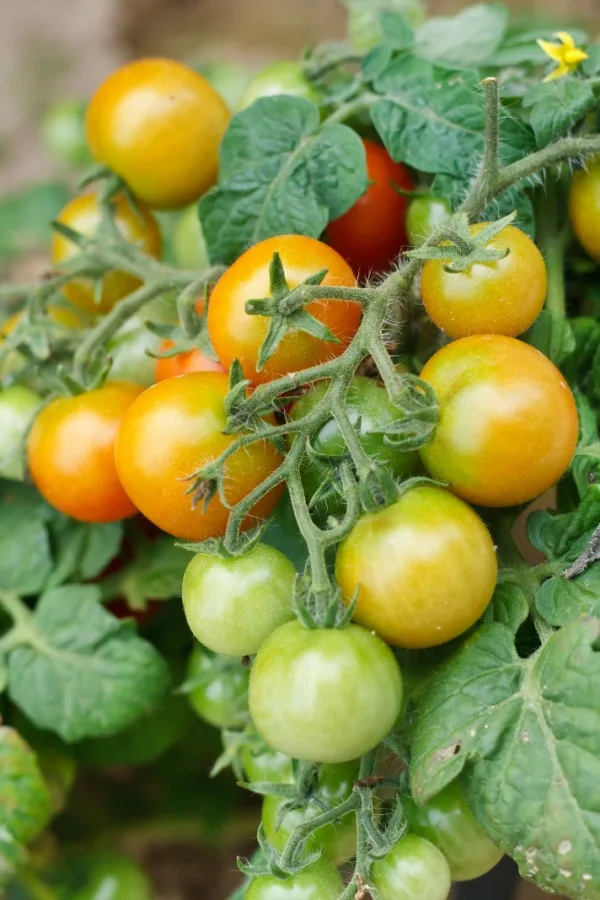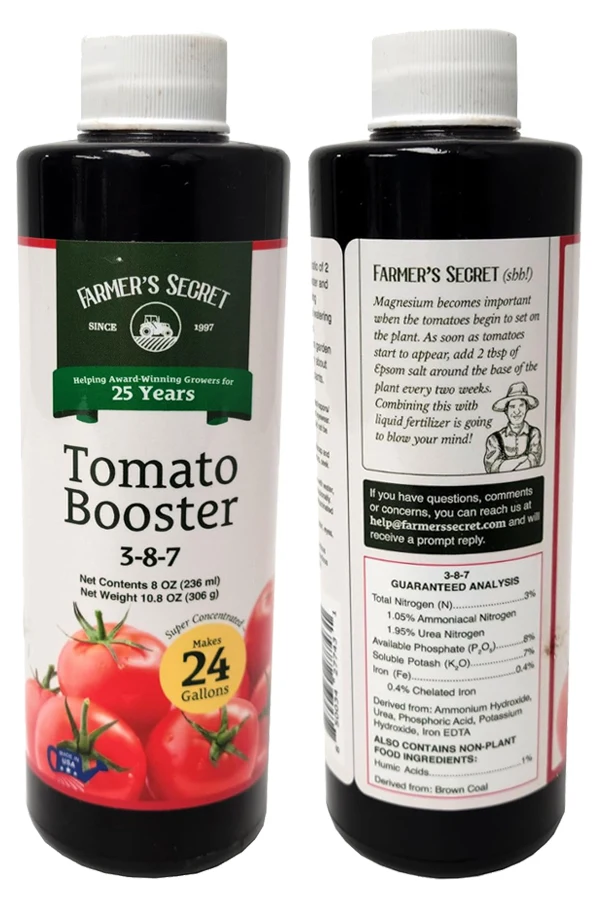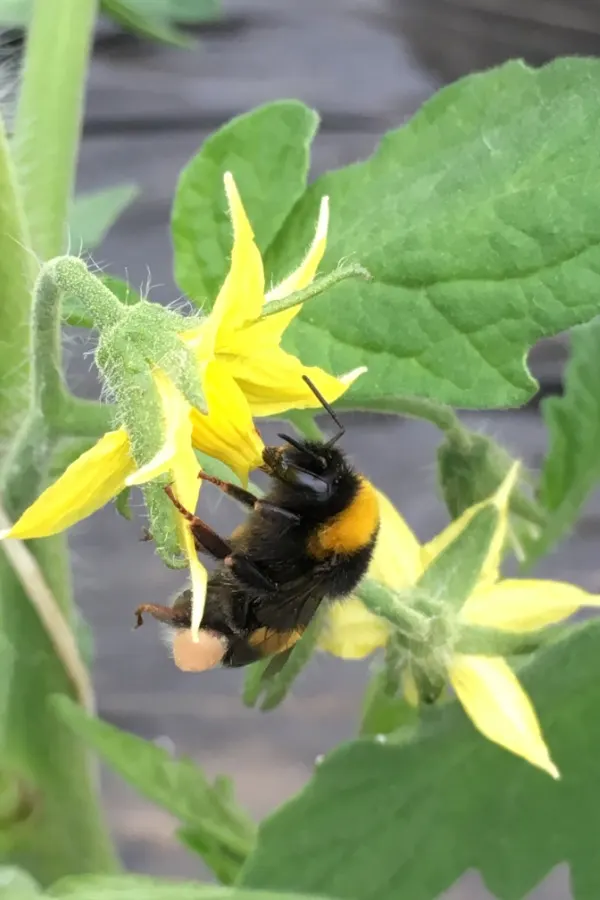Looking for the best ways to keep your tomato plants producing a big crop of juicy tomatoes all summer long?
Tomatoes are by far one of the most popular plants to grow. Whether you grow multiple varieties in a traditional garden setting or just a few plants on your back patio, they are extremely rewarding plants – most of the time!
Unfortunately, tomatoes can also be one of the most frustrating crops to grow as well. Even the most beautiful plants that are full of foliage and lush green growth can still struggle to produce blossoms and fruit. Especially when it comes to doing so all throughout the summer months.

This can leave even the most experienced gardener scratching their heads and wondering why. The good news? Thankfully, there are a few simple “tried and true” methods to use on your tomatoes that can all but ensure that your beautiful tomato plants continue to keep producing fresh tomatoes all summer long!
Types Of Tomato Plants – Keep Tomato Plants Producing
One thing to keep in mind when it comes to overall production is the variety of tomatoes you are growing. Tomatoes fall into two main categories: indeterminate and determinate.
Most of the time, the type of plant you have will be labeled on the tag when you purchase your tomato transplant. Or it will be listed on the seed packet. If not, a quick internet search can give you an immediate answer as to which variety you are growing.
Why does this matter? Because indeterminate tomatoes are capable of producing fruit up until the first fall frost. Varieties like Brandywine, San Marzano, Big Boy and many others will continue to produce all summer long as long as they get the nutrients and care they need.
Determinate tomatoes, on the other hand, only grow to a certain size and produce all of their crop over a short period of time. This also means that all of their fruit will ripen around the same time frame. Determinates can be a great choice if your end goal is canning or preserving tomatoes.

But this also means that once a determinate tomato plant starts to slow down bloom and fruit production, it can not be revived to produce more. It’s still a great idea to care for your determinate tomatoes with the same tips below, but realize that once determinates are done, they are done.
With getting the most out of your tomato plants this summer – here is a look at 4 big secrets to keep them more productive than ever!
How To Keep Your Tomato Plants Producing – 4 Big Tips To A Big Harvest!
Keep Your Plants Powered For Fruit!
Tomatoes are extremely heavy feeders. They require a tremendous amount of nutrients and resources from the soil in order to grow strong and healthy. By about mid-season, you need to replace those nutrients so the tomato plants can keep on producing fruit.
You can help power plants by adding fertilizers to the soil. The key, however, is to use the right type of fertilizer. Most commercial fertilizers provide loads of micro nutrients as well as the big three – Nitrogen, Phosphorous, and Potassium.
Nitrogen is important to plants early on since it helps them focus their energy on growing large and producing foliage. But now that plants are setting blooms though, you need a fertilizer that focuses on fruit production as opposed to growing foliage.

Higher phosphorous and potassium levels are important when it comes to blooming and forming fruit. They work to grow strong root systems and increase the overall health and strength of plants. But most importantly, they both help to grow, support, and ripen fruit.
Choose a liquid fertilizer that has at least double the amount of Phosphorous and Potassium as it does Nitrogen. Affiliate Product Link: Farmer’s Secret Tomato Booster Fertilizer
Give plants half a dose of the recommended amount but apply it every 10 to 14 days. This will allow the tomato plants to get a steady supply of nutrients to keep producing fruit.
Avoiding Fruit Overload – How To Keep Your Tomato Plants Producing
Sometimes, tomato plants can get what is referred to as “fruit overload.” This means that there are tomatoes growing and trying to ripen on the plant that it will actually start to slow down or stop setting new blooms altogether.
To combat this, pick the tomatoes early – even before they are fully ripe. This helps to trigger the tomato plant to keep producing new blooms and avoids fruit overload.
As soon as about a quarter of the fruit starts to turn its mature color, pick it off the plant. The fruit has already started the ripening process and is no longer absorbing nutrients and energy from the plant. It will continue to ripen off the vine without any issues at all.
Not only will this allow the tomato plant to have more energy to keep setting new blooms, but you will end up with healthier, blemish-free fruit.

Light Pruning Can Make A Big Difference – How To Keep Your Tomato Plants Producing
There are many different mindsets when it comes to the “right way” to prune tomato plants. Some prefer to do heavy prunes so that each plant only has one main leader, while others just let the plants grow wild.
However, heavy pruning is usually a bit excessive for most home gardeners. On the flip side, not pruning at all is usually an open invitation for a whole host of issues. Instead, most tomato plants just need a light pruning to keep them producing well. See, “How To Prune Tomato Plants – And Why It’s So Important!”
By removing a few of the suckers, you can help prevent plants from getting too overgrown and bushy. This helps to open up the very middle of the plants and allows them to receive proper sunlight and airflow.
At the same time, prune up underneath your plants a bit too. This allows for water and air to flow through the plant as well – and makes the task of watering far easier too.
Keep Soil Evenly Moist – How To Keep Your Tomato Plants Producing
Lastly, the final key to keeping tomato plants producing fruit is proper watering. Both overwatering and underwatering can cause big issues with tomato plants.

Too much water or inconsistent watering can result in splitting or cracking fruit. In addition, it can also cause an increase in blossom end rot. Too little water and plants will struggle to support growing and ripening fruit.
The best way to check to see if a plant needs water is by using an inexpensive moisture meter. These devices will allow you to see moisture levels deep where the plant’s roots are as opposed to just the top few inches of the soil. Product Link: Soil Moisture Meter
For tomato plants, the sweet spot is between 40 to 80% moisture. If the meter reads around 45% or lower, then it’s time to water. If the meter reads anywhere in that range or above, hold off on watering and check again the following day.
With a just a few easy tasks – you can and will have your tomato plants growing strong and healthy while producing fruit long into the growing season!
I Grow Tomatoes
Follow Our Facebook Page For Even More Great Tomato Growing Tips! I Grow Tomatoes Facebook Page
I Grow Tomatoes is a website created for those who love all things about tomatoes – from planting and growing – to cooking and canning! We publish two articles every week, 52 weeks a year. Sign up today to follow via email! This article may contain affiliate links.
